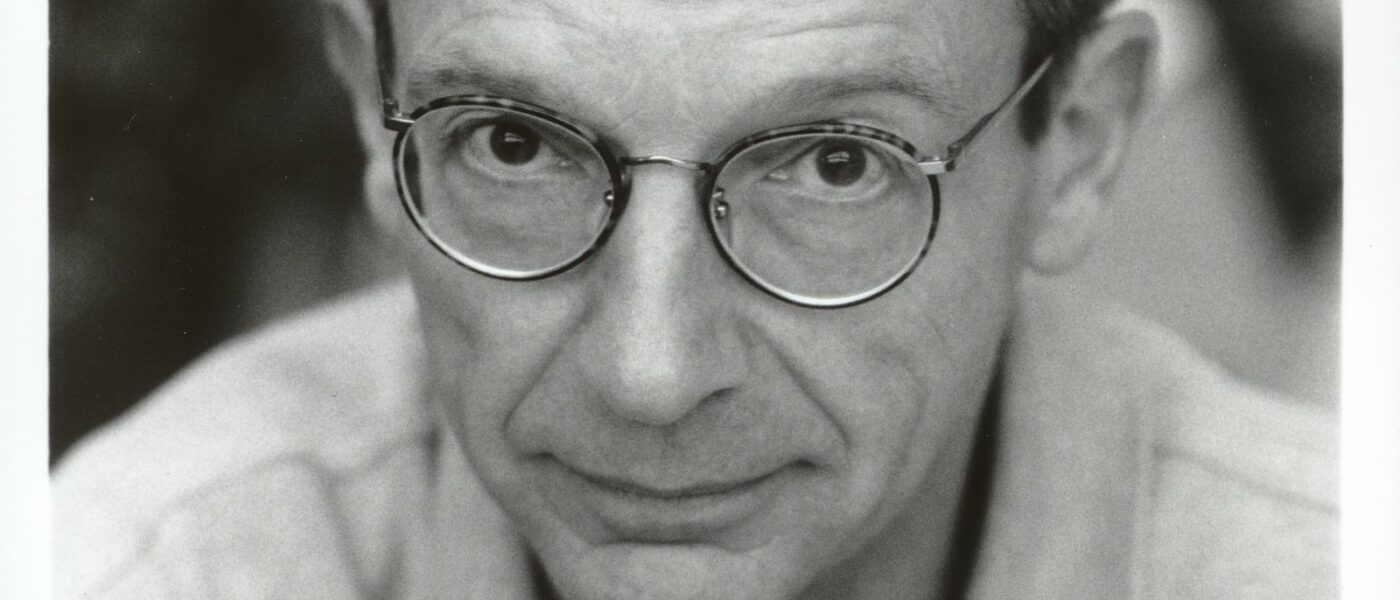Four 1990s-Spanning Films From Director Patrice Leconte

DIRECTOR: PATRICE LECONTE/FRENCH
STREET DATES: JULY 30TH, 2024/KINO CLASSICS
Kino Classics releases a four-film set spanning the 1990s output of director Patrice Leconte, then enjoying his greatest period of critical and audience recognition both in his native France and abroad. From the sensual pleasures of The Hairdresser’s Husband (1990) to the equally sensual albeit tragic period literary piece Yvonne’s Perfume (1994), also offering an unusual departure in the star-driven action-comedy Half a Chance 1998 before rounding out both a decade and century with worldwide arthouse sensation The Girl on the Bridge (1999), this home video sampling allows an interesting opportunity to review, re-experience, and reflect on the type of highly-wrought, ultra-romantic screen-fare that broadly “cultured” audiences of the day were directed to by discerning contemporary critics.
Featuring such notable and familiar performers as Jean Rochefort, Jean-Pierre Marielle, Vanessa Paradis, Daniel Auteuil, in addition to the final co-starring film of French movie-icons Jean-Paul Belmondo and Alain Delon, this selection of films from director Leconte, also featuring notable contributions from cinematographer Eduardo Serra and composers Michael Nyman and Pascal Estéve, precisely aligns with the label of “quality” that gobbled up Césars and “foreign film” Oscars in its day, while also providing audiences with a Saturday evening spent in a “nice” theater, and a welcome opportunity to feel good about their taste in movies.
The Hairdresser’s Husband (Le Mari de la coiffeuse) (1990)
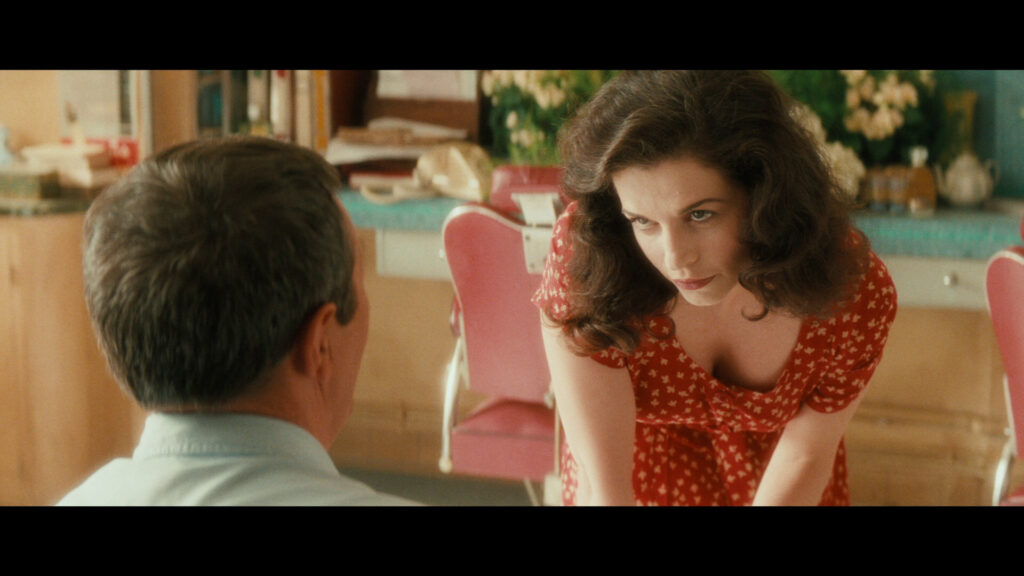
Arthouse circuit hit from the heyday of “foreign films” appealing to Middle America’s middlebrow tastes, back when my teacher parents could hire a sitter for a movie night out and come away feeling “cultured” by some faintly exotic sex and sophistication, The Hairdresser’s Husband plays past its awards-attracting pedigree with some sincere and sincerely weird story elements and characterizations. Antoine, played by Jean Rochefort as an older man, is shown as a boy developing a sexual fixation on his small seaside town’s local hairdresser, particularly having once seen her heavy, braless breasts stretching the loosened fabric over her white smock as she bent over to cut his hair; an image past her tragic death by an overdose of sleeping pills he carries well into adulthood when he encounters a beautiful hairdresser named Mathilde (Anna Galiena), who similarly eschews the constraint of a bra over her ample breasts peeking out behind her white smock. Such is Antoine’s overwhelming obsession that he actually proposes marriage during his first appointment, and which (surprisingly?) Mathilde accepts after their second.
Could anyone but the French get away with this premise? Perhaps not, but director Leconte and co-writer Claude Kotz’s script preempt any viewing objection through a disarmingly good-natured approach to both the story and characters, Antoine and Matilda obviously soulmates in their mutual erotic delight in the possibly heretofore unconsidered sexualized ritual of shampoo, rinsing, trimming, and hair tonic. Cinematographer Eduardo Serra’s Renaissance-level, glowing photography provides an exceedingly effective romantic visualization of these admirable perversions, and Michael Nyman’s layered score, along with various diegetic Middle Eastern musical selections, by which Antoine similarly and compulsively responds to in humorously amateurish dance-fashion, overall provide a convincingly rapturous evocation of a strong but inherently fleeting sexual bond.
Yvonne’s Perfume (Le parfum d’Yvonne) (1994)
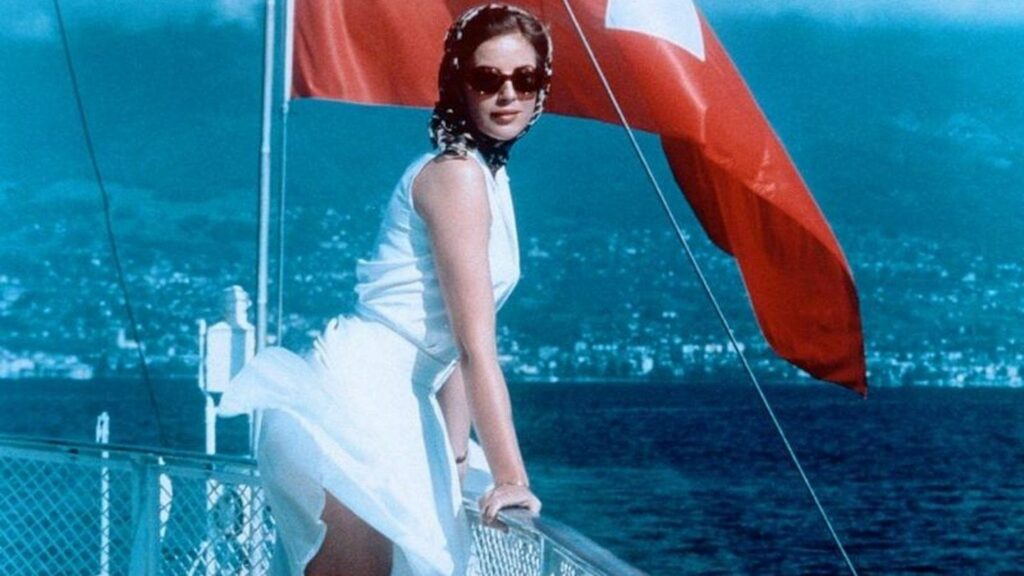
Adapted by director Leconte from Nobel laureate Patrick Modiano’s 1975 novel Ville Triste, Yvonne’s Perfume is set in the summer of 1958 at a hotel resort between France and Switzerland on Lake Geneva, detailing the brief but intense romance between Victor Chmara (Hippolyte Girardot), heir to a White Russian title and now escaping the draft for the Algerian War, and novice screen actress Yvonne Jaquet (Sandra Majani); both encouraged and mentored in life, style, and love by gay elder Epicurean René Menthe (Jean-Pierre Marielle), a Belgian-North African physician with mysterious cultural and political sympathies of his own.
The complicated brackdrop alongside an equally complex story-structure and editing-scheme, cutting back-and-forth between varying stages in the young couple’s seasonal tryst with an emotional as opposed to causal logic, does few favors for viewers trying to follow a conventional plot, but like Leconte’s The Hairdressers Husband before it emphasizes the in-the-moment nature of sexual expression that takes on a decidedly melancholy flavor in retrospect. Again made up of discrete yet dreamy sensual impressions of the pair’s initially passionate tryst in the sun-dappled woods, or the primary hues of the gleaming curves of a midcentury-model car down a countryside lane, or indeed Yvonne’s billowing white skirt in the crossing-breeze of the lake’s twilight, midsummer glow – the latter of which not only frames the film but also became its main promotional and poster-image – Eduardo Serra’s by now familiar open-lens, miraculously pitched a few f-stops short of full-glare, and an equally effective, full-bodied orchestral score from Pascal Estéve together provide an otherworldly quality to an ultimately earthbound affair.
Half a Chance (Une chance sur deux) (1998)
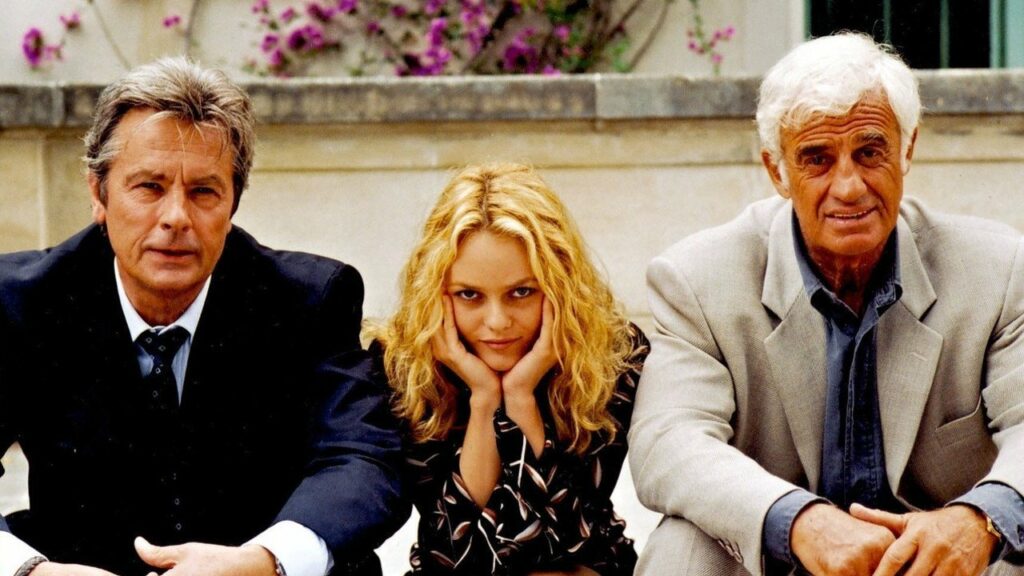
Left-to-right the opening credits read “Jean-Paul Belmondo Alain Delon”, which if you’re familiar with similar above-the-title standoffs throughout film history can stymie even slightly more ego-driven productions to hilariously disastrous effect. (My best guess? They either decided to go last-name alphabetically or flipped a coin.) Delon and Belmondo’s first film together since Borsalino (1970) casts the pair as stylish car dealer Léo Brassac (Belmondo) and wealthy restaurateur Julien Vignal (Delon), who in addition to having a military background and a secret criminal past, respectively, also each find themselves the possible father of 20-year-old Alice Tomaso (Vanessa Parsdis), recently released from prison for multiple luxury car theft. Past a cute double-paternal rivalry/bonding sequence over the weekend, before they can get blood tests Monday morning, the parallel plot of a dangerous Russian Mafia drug-trade, under the distant but ever-watchful surveillance of the Paris police, converges when a sleek red vehicle, containing several million U.S. dollars’ worth of blood money in its trunk, is stolen later that evening by Alice, escaping an attempted sexual assault in a nightclub bathroom. The Russians recover the subsequently abandoned vehicle, but not before rogue cop Carella (Eric Defosse) intercepts the attaché case and stores it in an anonymous railway locker. Before you can say “action mode”, the film switches past its first half-hour of light comedy to a solid hour-and-twenty minutes of escalating mayhem as the unconventional family trio and various trenchcoated and slick-haired Russian killers proceed to blow up all the houses, hideaways, strongholds, and transportation modes in each other’s fleeting possession over the missing cash.
While rarely distinguishing itself from other formulaic action movies of the period, which being French undoubtedly limited its distribution prospects outside of Europe – possibly explaining why the film is little known in North America – Half a Chance is probably most enjoyable as a last chance to see Belmondo and Delon onscreen together for the final time, and their shared chemistry with the younger Paradis through all the beat-for-beat, expected action tropes is undeniably fun. A decided change of pace for director Leconte, who would go on to cast Paradis as the co-lead in the more characteristic art-wheelhouse of his next production, The Girl on the Bridge (1999), this Francothriller nonetheless offers equal pleasure for seeing 62-year-old Delon fly a helicopter; or 64-year-old Belmondo climb from a speeding car, up a midair, dangling rope ladder, to that road-cliff and midsea-navigating helicopter. (Given that there’s no cheating close-ups in the long shot-held stunt, I’m just gonna assume that that’s JPB all the way, baby.) For true fans, though, there’s much earlier a scene where the classic screen icons of French Cinema are mutually flummoxed by a carton-wrapped “meal” of McDonald’s cheeseburgers; which by itself probably makes/justifies the entire film.
The Girl on the Bridge (La Fille sur le pont) (1999)
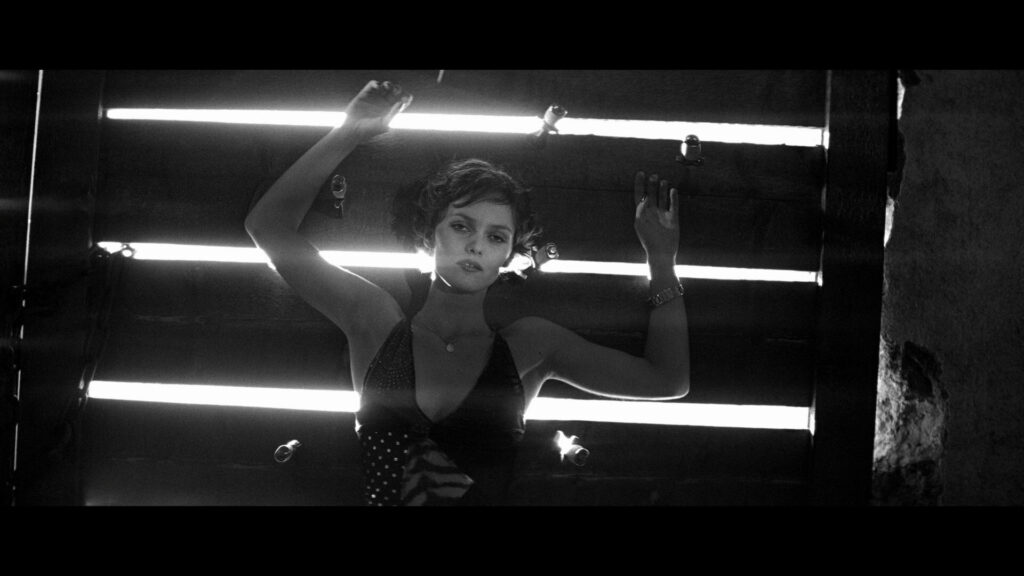
From Paserelle Debilly, Paris to Galatea Bridge, Istanbul, the gorgeous black-and-white images linking two arched, river-spanning landmarks capture Europe circa the millennium in suitably timeless, highly-romanticized screen-terms. The initially hapless, romantically maladapt Adèle (Vanessa Paradis), narrating her recent life in retrospect of her mid-sea and mid-story rescue, sees her luck change when earlier rescued from a suicide attempt at the film’s first location by the mysterious Gabor (Daniel Auteuil), who past their premature discharge from hospital convinces her to become the “assistant”, or more accurately the artfully-missed target, of his knife-throwing act. Their vaguely sadomasochistic, indirectly sexual connection continues through many cinematically exoticized ports in the European Union, Adèle’s preternatural luck unfortunately not extending to her serially over-hasty and otherwise unfulfilling romantic pursuits, even as the stakes of their dangerous cabaret performance – “blind” behind a shower curtain; double-handed and eyes-shut; bodily-spinning on the “wheel of death” – increases to ever life-defying levels.
Perhaps it’s not a spoiler to point out that two of these other Leconte movies profiled here story-climax with suicide, and using suicide as a virtual framing- and thematic-device here seems a culmination of sorts regarding the persistent role death, specifically a death-embrace, plays in what Shakespeare most famously described as “a consummation devoutly to be wished”. Jean-Marie Dreujou’s monochromatically-textured cinematography imparts a deathless glow to these film-length, chasm-courting images, as musically source-scored by the eclectic likes of Marianne Faiithfull, Brenda Lee, Benny Goodman, Nora Morales, and various other international sources, and Leconte suitably sums up this cinema-century in movie-cadences equally eros and thanatos throughout. I’ll leave it to more perceptive viewers to decide which wins out in the end.
***
Besides the original trailers for three of the four films, excluding Half a Chance – which frankly I would have liked to have seen the most, particularly how they sold the “legendary” angle of Belmondo and Delon’s later screen team-up – there are no other special features included in this two DVD-set. The transfers are mainly fine for these lo-hi-def discs, or whatever DVD release resolution is being called these days, but there are two or three brief visual glitches to report on both discs, mainly confined to the first-positioned features The Hairdresser’s Husband and Half a Chance. But otherwise Kino Classics’ “Patrice Leconte Collection” offers fine value for a broader selection of works from an important director. Which is reason enough to revisit the 1990s heyday of the critically-acclaimed arthouse film. The glowing photography, the rapturous music, the tasteful nudity; all late twentieth-century expectations regarding the label “French Film” that this set admirably meets.
Images in this review are used only as a reference to the film and do not reflect the quality of Kino Classics’ DVD release.


